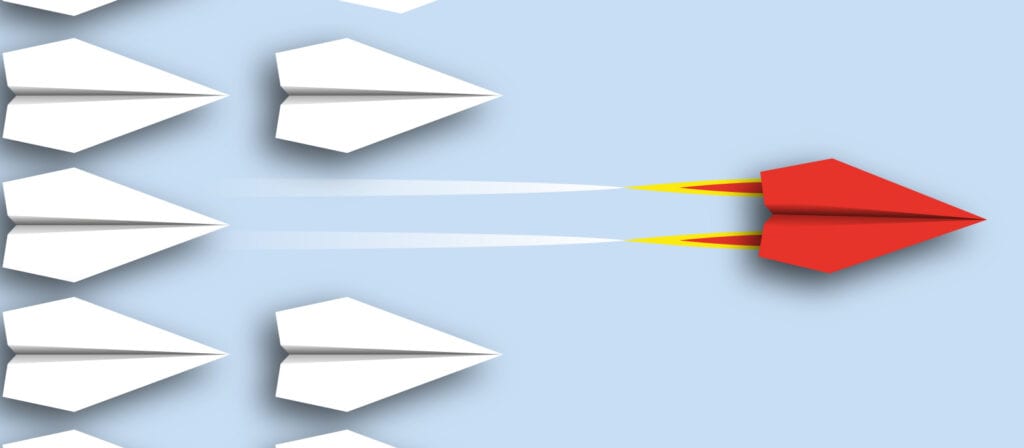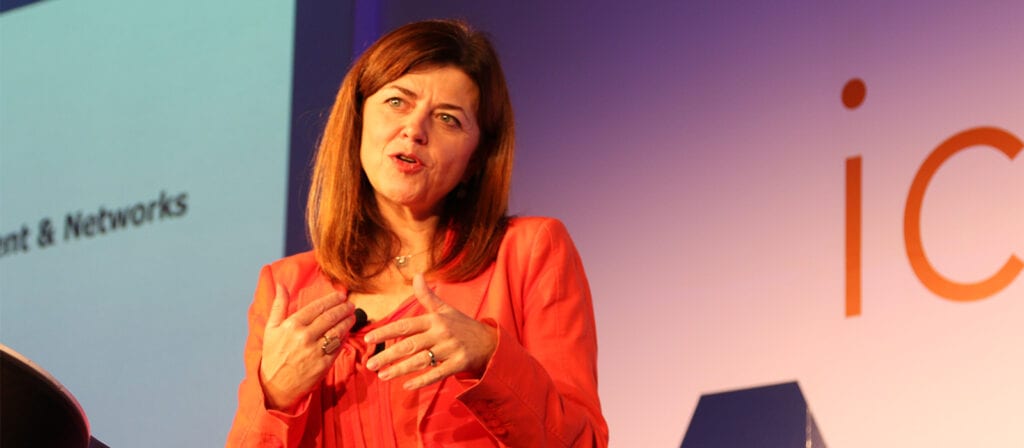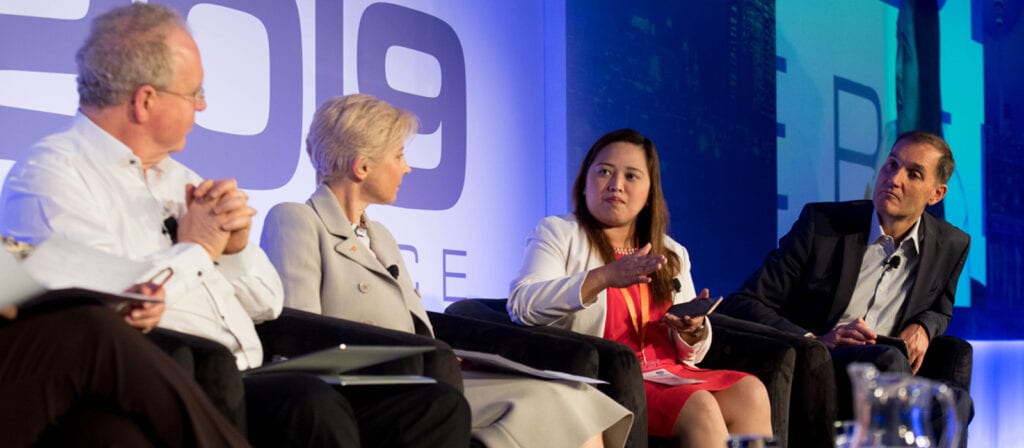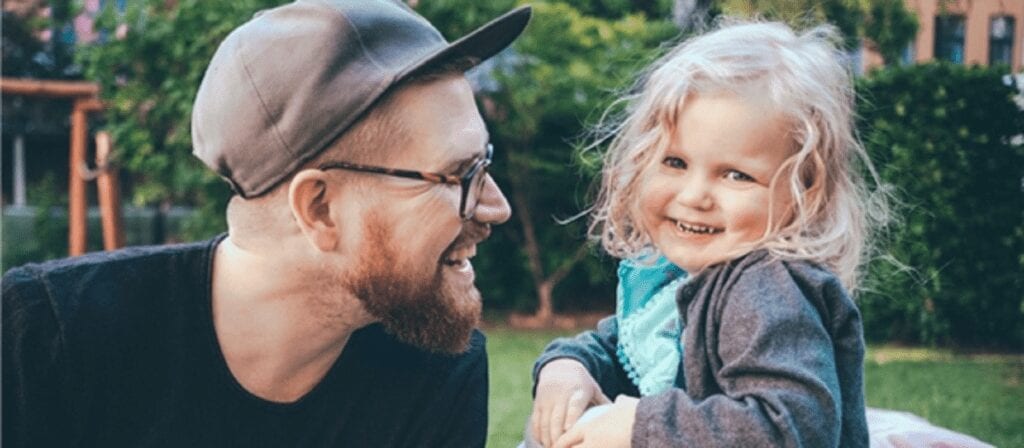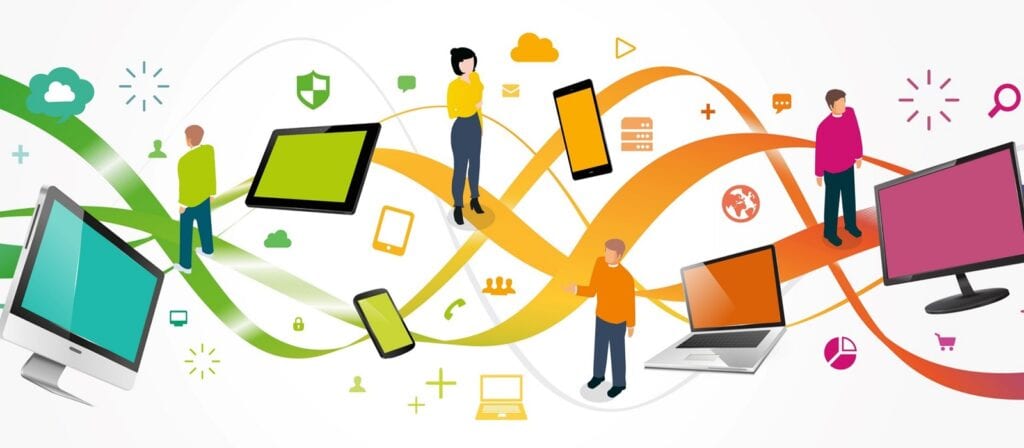Ben Telfer:
Hello everyone. Hope you’re safe and well and welcome to the first episode in a new webinar series for ICMIF looking at “The mutual advantage”. This webinar series will feature different ICMIF members sharing their case study on how they leverage their mutual and cooperative value proposition for a competitive advantage. Today, Episode One, features P&V Group, a cooperative insurer from Belgium. It’s my pleasure today to be joined by Sophie Misselyn, who is a Member of the Management Committee at P&V. Sophie, thank you for joining us and over to you.
Sophie Misselyn:
Thank you, Ben. So, also welcome to everybody. I hope really that you and your families are all safe and well. Today I will share with you how we embedded our mutual advantage, our mutual values, into our value propositions.
P&V is offering a fair protection to as many people as possible since 1907. It’s a long time and that’s really very important to us. So, if I will immediately also come to our mission and vision, but to really be accessible to as much people as possible is one of our core purposes. So, it’s not only in our value propositions to our customers that we take care of it, but also if we can, we will always support legislative initiatives really so that we try to avoid that people are excluded to get protection from insurance(s).
Given our cooperative nature, for us it’s also very important that we can focus on long-term value creation for all our stake holders. So that means, in practice, that’s almost all of our benefits, we reinvest it back into our own business. So, to stay relevant, we launched a big transformation program so that we will stay relevant and better connected to our customers and the distribution partners today. So, the transformation program, it’s not all about new solutions, but it’s also about a new platform, it’s also about a new culture. Because when don’t you change your habit, when you don’t change how you work, you will not also create a change towards your customers or towards society. So that’s also a part of our transformation plan, but today I will only focus how we embedded our background, our history, our values, in our value propositions to our customers.
Because it’s very important how we translated our mission and vision, first I will share with you our mission and vision. Like I already said, it’s really important that in our vision we say that we make influence accessible to as many people as possible. So, this way we embodied our commitments to a solidary and sustainable society. And then when you look what are the three pillars where we built our value propositions on up is first, accessibility, like already said. But being accessible is not only about looking that people are insurable but it’s also to look that we can provide insurance to a fair price. It means also that our solutions have to be easy, transparent, and take into account the future needs of our clients. We insure as much as possible to clients, so that means that we have five hundred clients, some of them private individuals, but also company and other organizations. We are a large, general insurer in Belgium.
We also want to help people to prevent of being a situation that’s not so pleasant. So that’s why we also will invest a lot in prevention. So there we combine our expertise but in today’s market we’d also combine with modern technology so that we can really give good solutions to as much as possible clients. And then, the third, but also very hot-topic today, is a sustainability of our planet and of the solutions we bring to our clients. That means that also we look how we can support a sustainable initiatives in our product development but also in society.
Next question is how we translated this in our strategic business model? So, last year, we did an exercise and we said, “Okay. If we look to who we are, who we can create, these values and some clear principles that you will build in our solutions that we offer to our clients.” If we talk about our clients, then we talk about ecosystems, but that I will explain immediately afterwards. So, what we say is if we want to have simple and transparent solutions at a fair price, it means also that we have one solution for one client needs. Otherwise, if we have too many solutions it’s not that clear for clients and it’s also more costly. So, that means that it’s more difficult to offer fair prices. So to be relevant it’s really important that we says, “Okay, for one client need to have one clear answer to our clients.”
It means also that you want to have good coverage so that really we want to avoid that there are surprises at the moment clients have a claim. It’s not the purpose that at the moment that a claim that a customer is surprised that something is covered or not. So that’s also important. Then, the third one, and it’s easy to say but it’s less easy to do, is we really want to build solutions to coach our clients together with our distribution partners to be correctly insured. So that means no under- or over-insurances. And it’s adapted to their own risk profile. So somebody who is more averse to risk will maybe be covered differently than somebody that has a less… that is more open to take some more risks.
What does it mean maybe this look easy but if you think for example what you see in Belgium is that in a lot of credit cards there are also some small insurances included without clients knowing, so if you could include them and, for example, ensures only the complimentary part of insurance will become cheaper for the customer. So if we say okay, no one to hold the insurance, it means really that we look to the whole spectrum of the co-corrections that a client can have.
The simple and transparent is linked to one solution per one client also. And like also clearly stated in our mission and vision, we will include elements of prevention in each solution and that I will also explain a little bit later. Besides, we encourage sustainable solutions. I will give you an example: in life insurance, we will support to invest in funds that are invested in that take care of our planets that are invested in goods, purpose solutions and not, for example, in weapons or things that we want to avoid… energy that is good for nature and not the inverse.
Besides, given that our clients are in ecosystems and that we really want to support on when something happens, we will also include additional services so that we also can increase the added value for our customers of their insurances.
Then, we will also work on inclusivity by design. What we mean by that is that if we want to be accessible for as much people as possible then we have to take into account in everything we do. So, on the one side in our propositions but also in our digital interactions for example if we create a customer zone then we will look how we can make it happen that it is also available for blind people for example or for people that are not have a good sight so that we also take into account hurdles that people have to work with us. That’s also something that we will take into account in our new propositions.
That’s the view of how we have guidelines that we use to be sure that at the moment we create a new product, a new value proposition that we also take our values, our mission and vision into account.
Why we think that’s important because we say okay, if you want to be relevant in tomorrow’s world then we really have to be there where the customer expect us to be. If the customer is not thinking about insurances standalone, he is thinking about having a car and then he needs an insurance or he’s thinking about, I will start a business, and at that moment he is thinking how can I protect myself to avoid that when something happens, I don’t go broken.
At that moment we have to be there but we have to be sure that he finds us at that moment. That means that we have to evolve in our solutions. We want really to change our paradigm and go from protection to prevention. The more we can avoid when something happens you don’t like, the better it is for everybody so that means that we really look to be simpler in model but also to have solutions, to offer solutions that are relevant for each customer and where you choose the coverage which you really need.
Given the fact that we are more and more connected we have to take into account the data so that also we can be more relevant for our customer and also to look at the prevention aspect.
Given the fact that the sharing economy is something that is more important and also very close to the corporative background, you want also to offer solutions in sharing economy. But it’s not only about value propositions. When you look to value propositions we are talking still about coverages and services but for the client it is also important the way he can work because, and for us our interaction model is also part of the solution. Because a client will also look, if it’s easier to work with us or not. That means that our interaction model has to fit with the needs of our partners and our customers.
The customer expects that we are there at the moment they need us and that we also detect that they need us. That means that we also invest in the interaction model so that we can give instant feedback to our customers or distribution partners, that we have a smooth integration with the partners so it’s also easy for them to work with us. And then it means that we are “phygital”.
Why we say “phygital”? Our clients will choose some interactions that he will do physical, so with his distribution partner, with a broker or an agent but he will also do some interactions digitally. That means that we have to offer both of them and that the customer can choose how he works with us but that it is also seamless so that on the one hand the distribution partner has a view on what’s happened or we have a view at the call center so that the customer doesn’t have to repeat two times what he did, to us. All the new requirements, we take into account in our transformation to be sure that we have an answer to the clients’ needs of tomorrow.
When I focus now again on our value propositions we say okay, we have to prepare to ecosystems. Let them look at which ecosystems are important for our client, linked to the business that we protect today. If we look then to the different ecosystem we choose, we chose six different ones and that’s first of all mobility. Mobility, we there also see a big shift. We go from a car insurance to a protection and prevention of my mobility as a whole and not only for my car. In home we see also a lot of challenges linked to the IoT and the smart homes with new possibilities and also a lot of new services linked to prevention.
Health, I think, is the hottest topic today and I think it will even become more important now with the COVID impact than before. We will also be there to the people that started to have their own business. We want to be there for people at the moment that are preparing their pension when they are working and saving for their pension or at the moment they have no pension and they live longer and longer.
Those six ecosystems we defined and for which we have a separate strategy. But now I will again make the link to who we are so that means also that for each ecosystem we will look how we can include elements of prevention and sustainable services.
For example, for mobility, also for fleet, we will help our customers with reporting tools where they can follow the driving behavior of their employees but also the potential technical failure or the weather forecast so they can better plan and better plan their work and have better view on what’s happening. For example for pension, how we can help people to have a decent pension is also by informing them to work on awareness and then give solutions to fill their pension gap.
For health, we work also on prevention, burn-out prevention for example and for home and family we are looking to solutions linked to smart devices for example we are looking to funds that have a sustainable investments. We also help people in their business with for example cyber security prevention or wellbeing at work it’s more and more important. And also now in the context of COVID we are more and more investing and looking how we can better help our clients for improving wellbeing at work.
That is a glance on the different ecosystems and possible new services. Now, I will go into some concrete examples that are already working today where we work on the ecosystems and where we also have elements of new services or prevention aid.
I have examples in three different domains. On the one hand mobility, health and then also in the home. Home first example very shortly, what we did last year is, we said okay, instead of only being there at a client, if there is something happened that he don’t like for which he is insured, we also want to help him at the moment he has a small breakdown in his house and he don’t find a repairer. At that moment we also want to help him, so we offer a platform where he can very quickly ask and find a repairer for small reparations he immediately, there is also a price and he can make an appointment with the repairer to come and fix his problem, so it’s very convenient and there we work together with our partner Ima Benuits which is our assistant provider and it’s also very easy and it’s digital flow.
Then I will go to the next example. That’s our weCover. weCover it’s also a solution be built together with one of our partners Dieter, it’s not a car manufacturer but a dealer in Belgium. So there are clients, our P&V clients, a partner and we make a solution for young drivers. Young drivers are difficult to insure but we want not only to have a solution for them but also to help them pay less premiums to become a better driving, that’s why with a driving app and black box we create a new solution and what’s more important is that not only they get an insurance that way, but also by gamification we make that they become better drivers and that they improve their driver behaviors.
This way we also work on prevention and on top of that we can also add some additional services. Additional services for example in case of a car loss but even more important when really something bad happens and there is a big crash we can immediately send a notification to our assistance provider who will immediately try to contact the car and if that doesn’t help we will immediately send an ambulance so this way we already also saved some lives. And that’s also very important to be able to react very quick in these kind of situations.
I go to a new example and that’s in health. It’s very a relevant example in these times I would say because together with a Belgium clinical psychologist with whom we were already working to work on prevention but were not linked to our ample benefit solutions, we worked on a solution for everybody who has more stress due to the COVID pandemic. What we did is, we created together a platform and in this platform people that are evolving to toxic stress or they feel that they have more stress than in other situations they can go to the platform and they can do some exercises. These exercises help you to keep your balance and to manage your stress better and so also this way you work on your mental resilience. So for us it is very important that we can help everybody.
This is a free platform so everybody can use. It is available in three languages, in French, Dutch and English so also our colleagues in the other countries from mutual point of companies that want to give this platform to their clients, they can do it. Also in French, it is possible so what we do is on the one side we support the launch of this platform but on the other hand we also do communications to our clients we provide them help to send also to their own place and we also use it internally for our own people to help them to work on their resilience in these periods because we really believe that after now that we have the pandemic maybe better under control that we will also have an impact on the lockdown on the mental health of a lot of people so that’s why we wanted to help him with this initiative.
The next example I will show to you is very recent, a new insurances for bikes. It’s not only for bikes it’s also for soft mobility, so for example a step or something is also insurable. So it was very important for us is it has to be relevant so, easy to be insured. It’s of simple product structure, only four coverages and it’s 100% digital, we don’t have any exceptions. You can only subscribe digital, pay digital and all communications are digital. And you “pay the Netflix way” like we call it now, so you pay by credit card only. But it means also that you can stop at the end of any month so it’s not that you have to take immediately a coverage for one year, you can stop at the moment you want and you always are insured for one month that’s going.
We created with a lot of partners since so it’s really important for us that we work together with other partners to add more value to our offering for example we have partners that give so that they have safety equipment and our customers get a percentage of… a reduction on this material when they want to invest in safety equipment for example. We also have partnerships looking to fall detection. We are adding assistance services so we really think that prevention and safety is very important so we are really looking how we can add as much services in this ecosystem to our clients to make sure that they right the safety as possible.
On the other side we also want to do something in society and not only for the people that have insurance with us. If people don’t have a claim during one year we will give a percentage of that premium to an association. As a first step we do it with some associations we select ourselves that are working on the safety of bikers in Belgium and in the second step, clients will be able to choose their preferred association. That’s also for the first time that we use this kind of possibilities but we also use it later and so the prevention as well us to our own insured as for society is important to us and this way we show it very clearly.
Then I go to the next slide, I have to be honest it’s very weird to talk all the time to my computer and to have no idea of any feedback, is it clear or not? But I will go to the next slide. Did I do two times or not, no. The next is, and as a last example I will show today is CliCover. Why I chose CliCover it’s only in test but it’s also because we created it differently as our other value propositions. We created it in co-creation with customers. What it’s all about, CliCover it’s an on demand insurance for bikers. What is it mean? What we see today is that, a lot of bikers only go for a ride if the weather is very good. So they don’t use it all year long but if they want to be fully insured, also when they fall for example, material damage, it’s very costly.
So, they hesitate to be fully covered given the fact that they don’t use a bike as much. That’s why we say okay, it’s a perfect example where an on demand insurance is very relevant for our customers. Let’s first look how we can offer good solutions before we will launch it to the market. Given the fact that also we want to be connected that we can help our bikers, it’s also linked to our platform so this way we can also help him when something happens. And there we also make again the link to prevention and safety.
Now I go to the co-creation. What we did is we make a test version of our app how it would look like and we searched for some volunteers to use it and to give some feedback. We had 16 active participants but they give a lot of feedback. You see that our 186 posts coming from there so it’s very good. And you see two types of men, one type of women. Different ages as well Flemish or Walloon people or it’s important in Belgium that we have the two regions there. They were all motorbike owners. They were very comfortable to share their opinion and they all live in Belgium.
The committee was alive for two weeks so it was last year that we did this analysis. What we learnt… here you see one solution but we had also a good few on our test center. So they really present them themselves they also said okay, do I use a lot my bike or not. What’s important for me or not so that we can also have an idea if this kind of insurance is really relevant for a certain segment. What we learnt from it is really the concept itself is really interesting to get a lot of feedback and very relevant feedback from users. In that case we also will use it, the co-creation for other solutions. It’s clear that it’s really a need for some drivers because they will only pay when you are actually driving. That means they are convinced that it’s a really relevant offer for them.
It is also interesting to see what are the most struggles, so what are the hurdles that make that they don’t buy the insurance, or they say maybe the subscription is too strict because we say now it’s from 35 years only and you have to have a new motor. It took one hour to be insured so that’s too long so there we have still some work to do and what’s also important to know is that they have fear of forgetting in driving their motorbike when they are not insured so there we also use, can we find some solution based on IOT linked to their mobile application that at the moment they use their motorbike that they also get a notification don’t you have to insure yourself? So, there we are also looking for some new smart solutions to have an answer to the fear that they say okay, how will I ensure that I don’t forget to put my insurance on?
Here you see an example of the test app. And you see that they really could give very detailed feedback and that’s very important that you can give feedback on details because it’s also on details sometimes that the cellphone or an app will work or not because it has to be really user friendly. And this way we could really have very specific detailed feedback on how we built the app.
That’s what I prepared today, I hope it was interesting and so what’s really important for us is that we really talked about how we can really build our value drivers, our cooperative values into our value propositions for customers so it’s about accessibility, it’s about prevention and sustainability. On top of that what we also wanted to share is that it is interesting to have a customer community. Last year we did a test motorbikes. Now we are looking to create a customer community that is a panel of people that want to give feedback on everything we do so on our proposition, how we are in the press, how we communicate with people. And we are now looking to set our proper customer panel that can help us to become a more customer oriented insurance company.
Thanks a lot. I hope I get some questions.
Ben Telfer:
Yes, thank you Sophie. We have had a number of questions in. Everybody was listening attentively. I know it’s quite strange when you’re just speaking to a computer but thank you very much for that excellent presentation and overview of how P&V leverage your long-standing cooperative values and how you’re transforming your business model to be the cooperative of the future. Like I said there has been a few questions in. Sophie, first question: what does your organization do as a mutual/cooperative towards its employees that shows a competitive advantage compared to a non-mutual organization?
Sophie Misselyn:
Yes to our employees I think that if you look for example now in the COVID period it’s really employees first. For example, we will not use technical employment for example because we care about the wellbeing of our employees. So it’s literally embedded so that solidarity, the trust is in our genes, it’s a part of our culture and for me it’s more in the small things. But you feel that people come first when you work at P&V and that sound maybe a little bit weird but I started 18 months ago at P&V and I feel that it’s different that you think at every step you take for your employees that you are going to look at what’s the impact also for your employees much more than in the other company.
When I had my first conversations with a lot of new colleagues and I saw that a lot of them were working for 20 or more years for P&V and I said, why you work at P&V and why you staying always working at P&V it’s always about the culture and want that. That’s for me the big difference compared to other companies.
Ben Telfer:
Thank you Sophie. Another question that is I guess very related to COVID-19 it is about your “everyone okay?” initiative. Was this planned pre-COVID or was it a response to the pandemic? And have you gathered any feedback so far from your clients or from your employees?
Sophie Misselyn:
Thank you. It was not foreseen pre-COVID. I have to admit that we are thinking about something similar to support while being at work. So, also to work on prevention, linked to employee benefit services but we didn’t start it at all so we were really still in a brainstorming phase. At the moment I think week after lockdown or something Elke van Hoof who is a psychologist who worked with us said okay why don’t we accelerate and start. I have to say okay she has experience with it and there are proven methods on which she has already been working for years. So it’s not that there was no scientific background available so the ideas existed but we had to put it in place in a digital platform. And that we did together in two weeks so it was a very… it gives a lot of energy to do something.
And then secondly, given the fact that we launched I think now two or three four weeks ago we had already some feedback but we want still to improve so at the first we got feedback that it’s useful but it took too much time, so it was a hurdle and it was also still too difficult some questions so in the meantime we already improved the platform. And now also it is in different models so you don’t have to do the 1hr30 you can do it in different blocks so that it comes more easy to use it and so that’s also more accessible this way. But I have already also feedback from some that it really helps to take the stress down at the moment you feel that your level is increasing.
Ben Telfer:
Thank you Sophie and very appropriate this week because it’s Mental Health Awareness Week so it sounds like a great initiative that benefits both the employees and clients. Another question that again is pandemic related and it’s about your whole “pay as you drive” or on-demand products which seem very relevant now with the reduced driving that many customers are doing in lockdown. Do you think that this current situation will increase or accelerate custom demand for products like this and will it accelerate P&V’s entry into developing new products like this?
Sophie Misselyn:
I think, and this is a personal opinion, I certainly think that it will increase this kind of questions of customers but it is a little bit early to really conclude the impact of COVID on client behavior. I think everybody expected we will work non-digitally and also it will have an impact on the ecosystem mobility in the sense that we for example in Belgium that people are less using their car but also are more working on biking. The question is really to have a more long time impact or not. But it’s clear that people are wondering, if I don’t use my car, why am I insured? So, we will have to come with solutions on that.
Ben Telfer:
Another question for you Sophie, or there’s two questions that are very similar here and it is, does “cooperative” resonate in the Belgium market and do you communicate your cooperative values to customers or do you more communicate values of prevention and sustainability?
Sophie Misselyn:
We focus more on values like I think it’s prevention and solidarity also the fact that we want to help everybody so that’s also clear in our communications that we are very accessible but the cooperative is not that known in Belgium in general so that means that we will more communicate on values than on the fact that we are cooperative.
Ben Telfer:
And does that change with different demographics? Do you find in younger customers appreciate also what that value proposition resonates with younger customers or is it more with your existing customer base through the broker channels?
Sophie Misselyn:
What we see is that recent years we feel that people are again more interested in cooperative values. And you see it on the one side with younger, and on the other side with the actual clients that’s clear. But on the other side what we see with young clients is that, on the one side they are behind the cooperative values but on the other side price is very important. It’s a little bit mixed. It’s not because they are behind the values that they will choose you as an insurer already. It has to be more than the fact that you are cooperative.
Ben Telfer:
Thank you Sophie and I think we’ve got time for one more question and it relates to P&V’s cultural transformation and the question is, where do you see the advantages of being a cooperative in transforming the culture at P&V?
Sophie Misselyn:
It’s a little bit linked like with my question about what you do for employees, what’s the difference? I think really being there and the fact that the human touch is very important it means also that we are now really working on confidence, on the fact that how we can empower everybody but that’s really so close to our values and our nature that it is more real that if you not mutual. When you are not mutual it is because you want to create that culture and I compare it a little bit, you have the culture when you are not a mutual, you will create a new culture, you have also values. And then you have a crisis and then the first thing you say is now we will decrease our cost with 10% and we will also have less people that can stay so we will have to fire some people.
That’s different at our side. For us, we will really search for solutions for everybody so that means that when we say that people are important and we talk about values like respect, we talk about values, cooperation, empowerment, with solidarity it’s close to our nature. And it’s not as apart from other things we do or that we have to explain to why our stock has decreased. So that makes it more easy to be close to what you are and that makes also that you can really use it as an accelerator in your culture change because it’s to who you are and that you scratch in the company and people get enthusiastic and really embrace the change and it’s really beautiful to see.
But it’s work and it goes not easy. But I think the biggest advantage is really the fact that it’s so close to what you are. If you are on things that are close to what you are, people go for it and they trust that you mean it.
Ben Telfer:
Thank you much Sophie, that’s all we got time for today. Thank you everybody for joining. Thank you Sophie so much for showcasing and sharing how P&V embed that cooperative difference and how it resonates with customers and embedded throughout the organization. Enjoy the rest of the day and please stay safe and well.
The above text has been produced by machine transcription from the webinar recording. ICMIF has made every effort to ensure that transcriptions are as accurate as possible, however, in some cases some text may be incomplete or inaccurate due to inaudible passages or transcription errors. Listening to or watching the webinar recording will allow you to hear the full text as delivered during the webinar but this is available in English only. Our transcriptions are provided to enable members to select the language of their choosing using the dropdown menu above.
